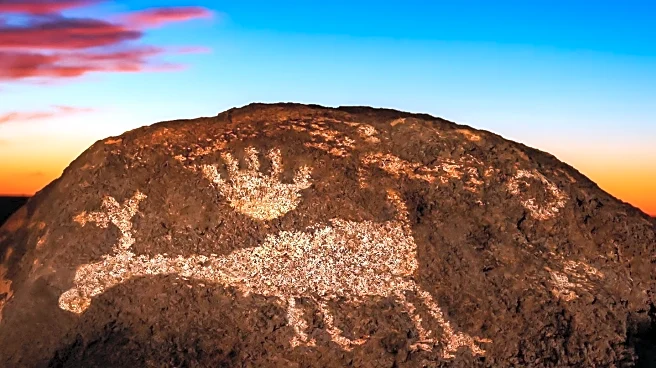Rapid Read • 7 min read
Hundreds of people gathered at Sutton Hoo, near Woodbridge, Suffolk, to celebrate the 1,400th anniversary of the burial of an Anglo-Saxon ship. The site is renowned for the 1939 excavation that uncovered the ship, considered one of the greatest archaeological discoveries. The event featured reenactment actors from around the world who recreated the burial ceremony, complete with Anglo-Saxon gifts, music, and readings. Lizzie Musson, the event organizer, emphasized the significance of Sutton Hoo for Britain and orchestrated the celebration to mark the milestone. The gathering included 80 living historians and attracted international participants, making it the largest living history event at Sutton Hoo.
AD
The celebration underscores the cultural and historical significance of Sutton Hoo, a site that offers insights into Anglo-Saxon history and heritage. The event highlights the global interest in historical reenactments and the preservation of archaeological sites. By attracting participants from various countries, the anniversary celebration fosters international collaboration and cultural exchange. It also emphasizes the role of historical sites in education and tourism, potentially boosting local economies and raising awareness about the importance of preserving heritage sites.
The success of the Sutton Hoo anniversary celebration may inspire similar events at other historical sites, promoting cultural heritage and tourism. Organizers and historians might explore further collaborations to enhance the educational value of such events. The National Trust, which manages Sutton Hoo, could leverage the increased interest to develop more programs and initiatives that engage the public with history and archaeology.
The event at Sutton Hoo highlights the ethical considerations in preserving and interpreting historical sites. It raises questions about how best to balance public access with conservation efforts. Additionally, the gathering of reenactors from diverse backgrounds reflects the growing interest in living history as a tool for education and cultural understanding.
AD
More Stories You Might Enjoy










